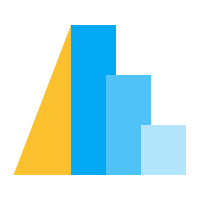Horizon Graph#
This example shows how to make a Horizon Graph with 2 layers. (See https://idl.cs.washington.edu/papers/horizon/ for more details on Horizon Graphs.)
import altair as alt
import pandas as pd
source = pd.DataFrame([
{"x": 1, "y": 28}, {"x": 2, "y": 55},
{"x": 3, "y": 43}, {"x": 4, "y": 91},
{"x": 5, "y": 81}, {"x": 6, "y": 53},
{"x": 7, "y": 19}, {"x": 8, "y": 87},
{"x": 9, "y": 52}, {"x": 10, "y": 48},
{"x": 11, "y": 24}, {"x": 12, "y": 49},
{"x": 13, "y": 87}, {"x": 14, "y": 66},
{"x": 15, "y": 17}, {"x": 16, "y": 27},
{"x": 17, "y": 68}, {"x": 18, "y": 16},
{"x": 19, "y": 49}, {"x": 20, "y": 15}
])
area1 = alt.Chart(source).mark_area(
clip=True,
interpolate='monotone'
).encode(
alt.X('x', scale=alt.Scale(zero=False, nice=False)),
alt.Y('y', scale=alt.Scale(domain=[0, 50]), title='y'),
opacity=alt.value(0.6)
).properties(
width=500,
height=75
)
area2 = area1.encode(
alt.Y('ny:Q', scale=alt.Scale(domain=[0, 50]))
).transform_calculate(
"ny", alt.datum.y - 50
)
area1 + area2
